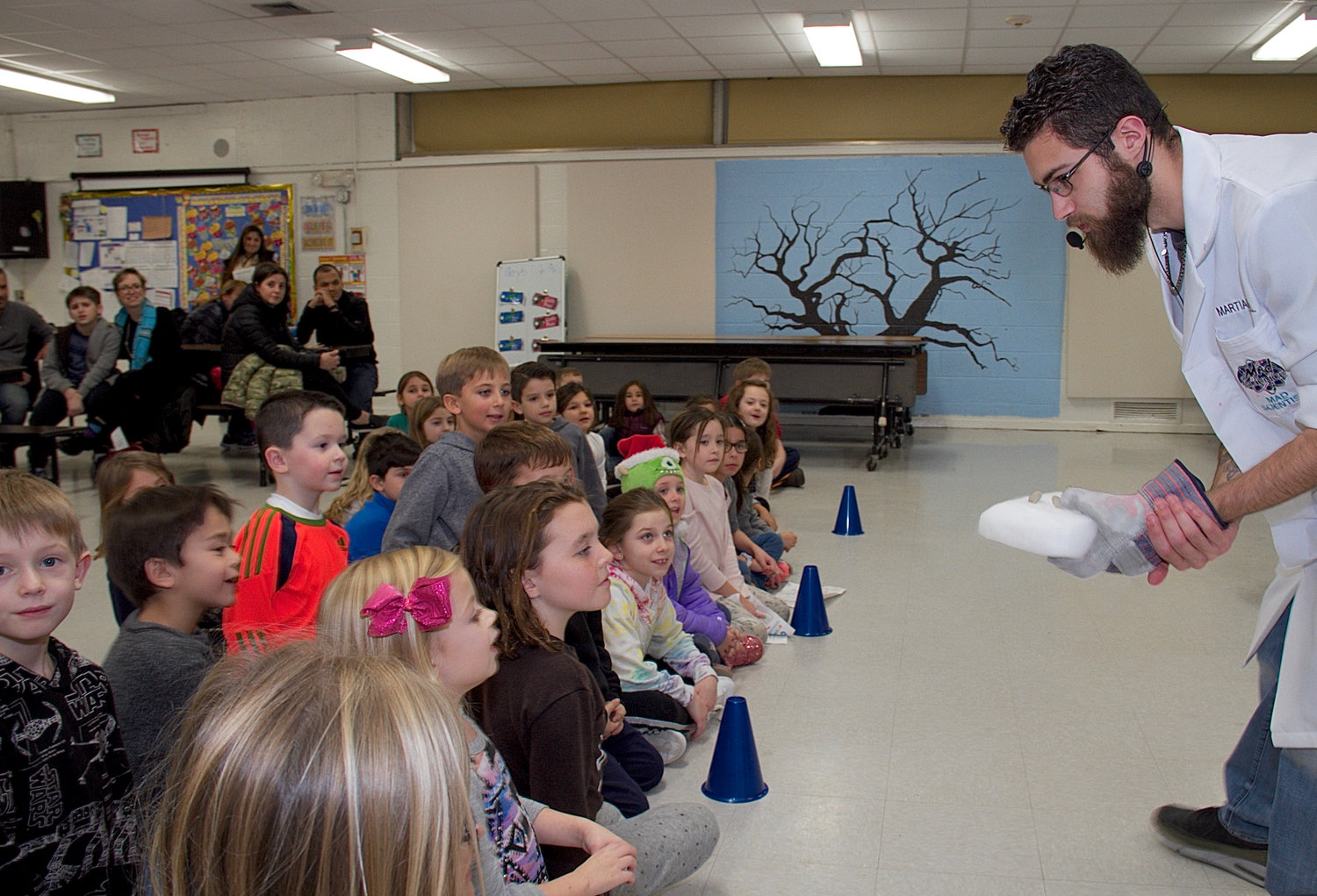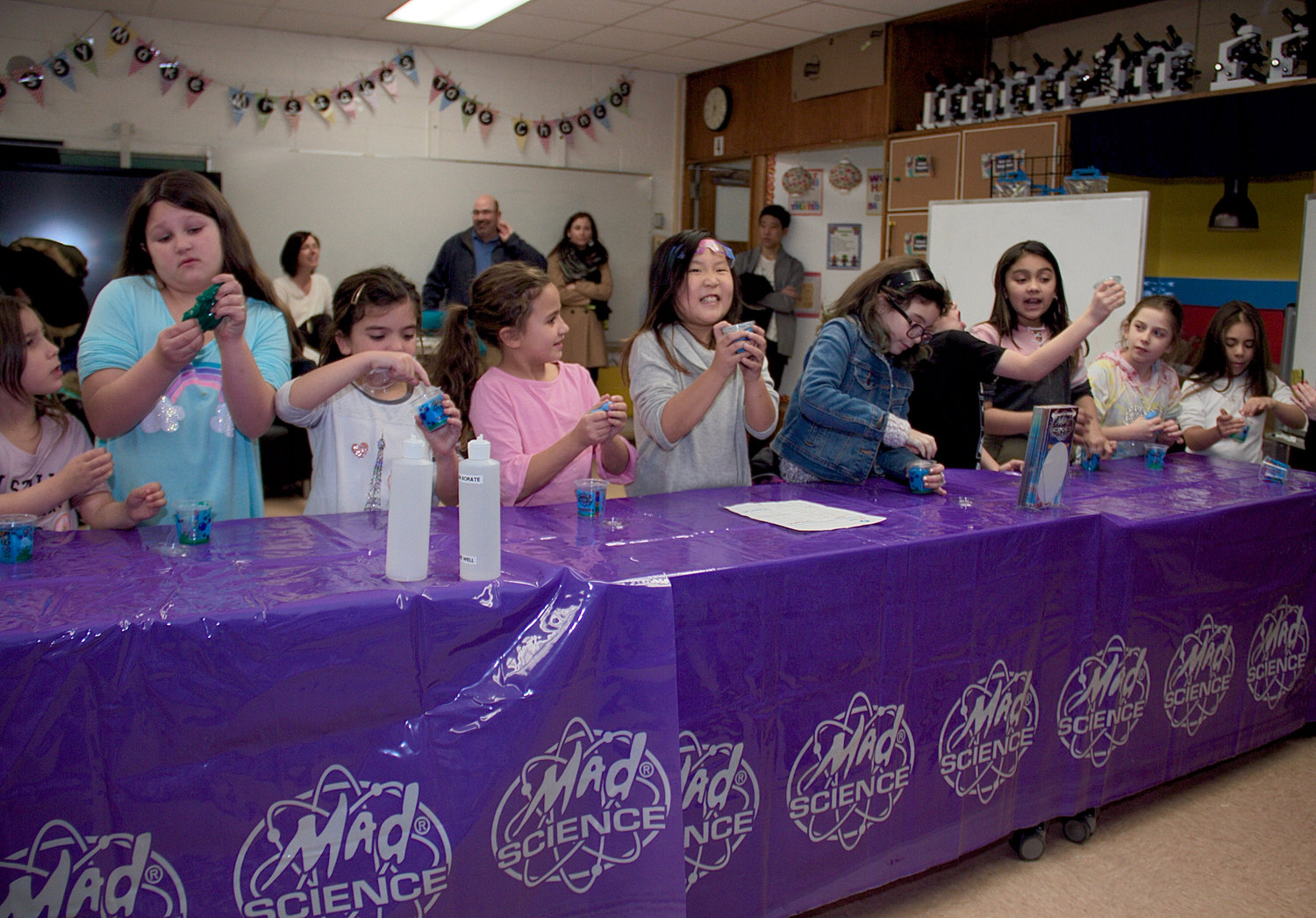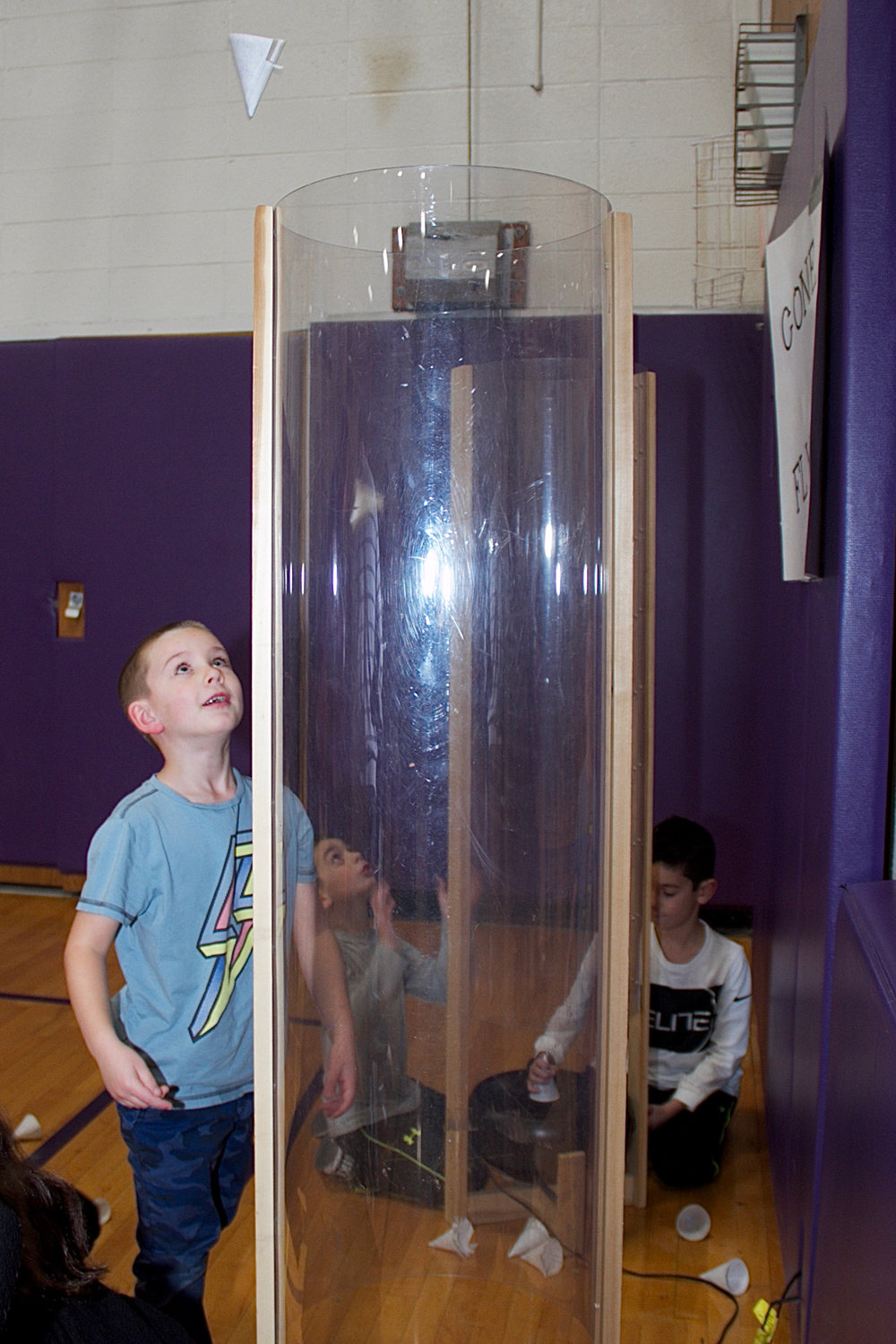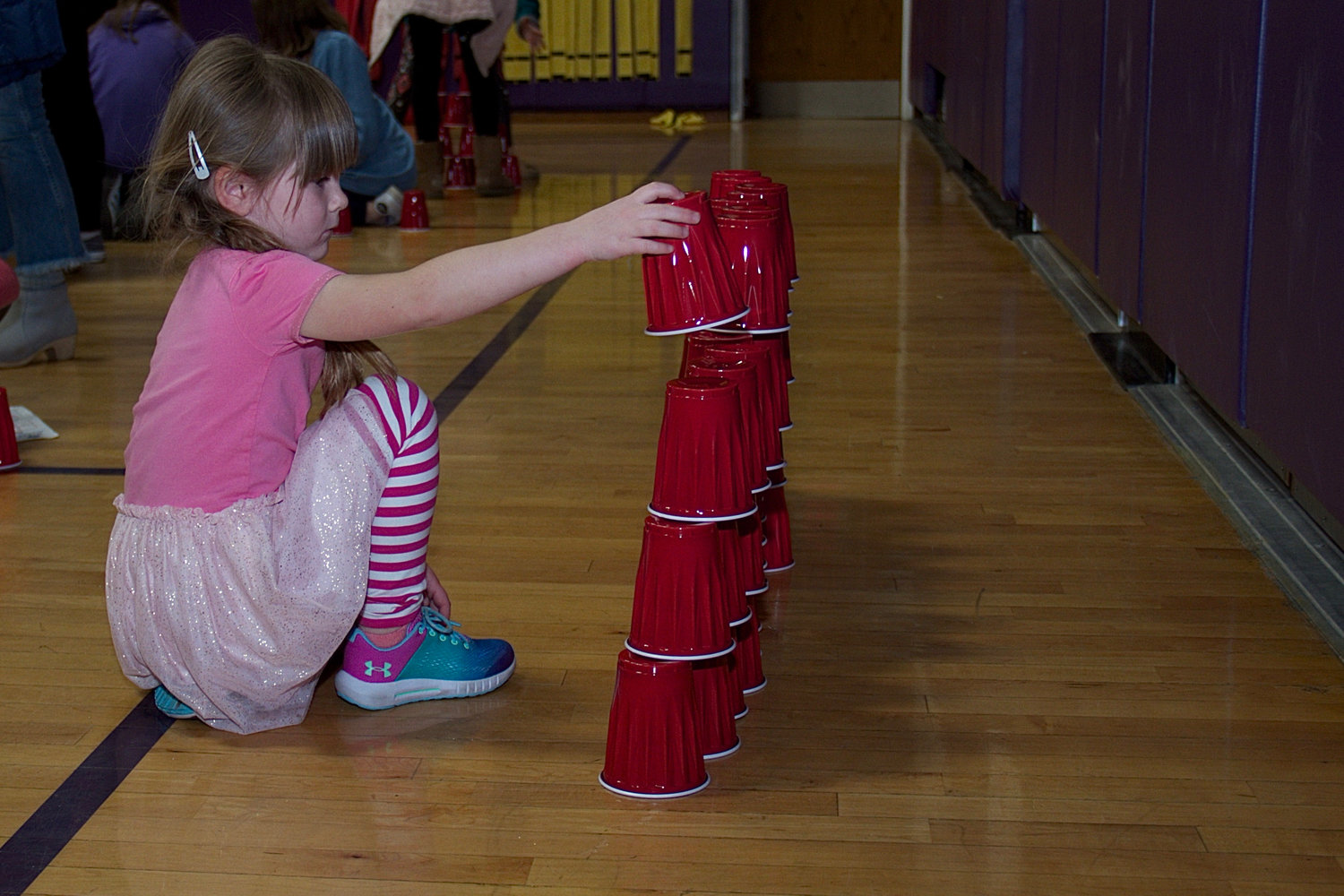Friday, April 19, 2024
A night of STEM learning
The excitement was contagious at Vernon Elementary School in East Norwich on Monday, and it was directed at activities that centered around hands-on activities to promote science, technology, engineering and math.
A demonstration for which dry ice dissolved into gas turned into a lesson on carbon dioxide and concepts like sublimation, or the transition from a solid straight to a gas. A few young children ran away frightened, but most jumped up and down.
“Seeing the reaction of kids is the best part of the job,” said Michael Lopalo, who works for Mad Science, an educational company. Lopalo travels throughout Nassau and Suffolk counties to put on science shows for children. “I sometimes even get letters and pictures that kids drew of me as a thank you gift,” he said.
For the past four years, students in the Oyster Bay-East Norwich School District have taken part in the “Hour of Code,” established worldwide to promote the learning of computer science. A one-hour event, it provided students with the opportunity to gain a brief experience in coding. Realizing that the coding event attracted a great interest from both students and their parents, the district decided to launch an inaugural STEM night this year.
The district included the core foundation of the coding program and enriched it by adding other activities of scientific learning. Vernon’s cafeteria and gym were converted into science workshops allowing students to sample more than a dozen science activities. Accompanied by their parents, children giggled as they concocted blue slime, shrieked when a potato was launched and concentrated intensely as they applied code to a computer game.
“While playing computer games, these students are thinking through the logic of how these games work,” said Suprabha Malhar-Jain, who teaches computer science at Oyster Bay High School.
Students from the high school’s math, robotics and coding clubs supervised the activities at the tables. At one, children in elementary school appeared to be fascinated by a robot that had been programmed by sophomore Preston Rosh and senior Dylan Kaber, who were happy to explain how it was made.
“Ten years from now, the core literacy and competency skills will not just be math, reading, and writing, but it will include coding,” said Janna Ostroff, the K-12 supervisor for science and technology, “so this is very important for our students.”
Learning seemed painless for Adriana Tiberio and Madeleine Ruiz, both 10, who swiped and tapped their fingers on the tablet screen to move small robots around the gym floor. Shifting their eyes quickly between the device and back to the screen, they were fascinated by the responsiveness of the technology and the fact that they were controlling it. Madeleine’s mother, Natascha, watched the girls closely and then smiled. “I wish I had this type of robot when I was young,” she said.
HELP SUPPORT LOCAL JOURNALISM
The worldwide pandemic has threatened many of the businesses you rely on every day, but don’t let it take away your source for local news. Now more than ever, we need your help to ensure nothing but the best in hyperlocal community journalism comes straight to you. Consider supporting the Herald with a small donation. It can be a one-time, or a monthly contribution, to help ensure we’re here through this crisis. To donate or for more information, click here.
Sponsored content
Other items that may interest you









